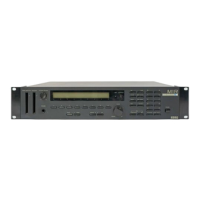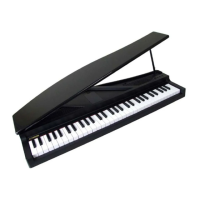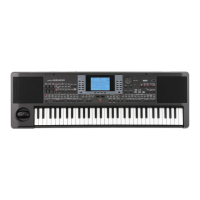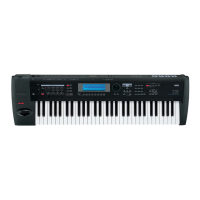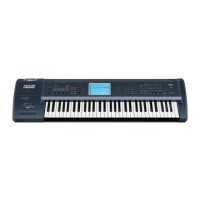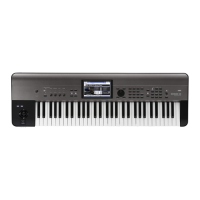Dynamic modulation, MIDI/Tempo Sync, and Common FX LFO Dynamic modulation (Dmod)
161
Quick Start
Introduction
SetupProgram
Combination
Sequencer
SamplingGlobalMediaEffectKARMA
Drum Track
Other
Appendices
Dynamic modulation, MIDI/Tempo Sync, and
Common FX LFO
Dynamic modulation (Dmod)
Dynamic modulation (Dmod) lets you use MIDI
messages or the M3’s controllers to modulate specific
effect parameters in real-time.
For details, please see “Dynamic modulation (Dmod)
and Tempo Synchronization” on page 442 of the
Parameter Guide.
Dmod Example
As an example, let’s set up dynamic modulation to
control an effect parameter in realtime.
1. As described in the procedure for “Program
Effects settings” on page 155, set IFX1 to 064: L/C/R
BPM Delay. Verify that you’re hearing a delay
effect.
2. Access the Prog P8: IFX– IFX1 page.
Using Dmod to change the delay level via the Joy-
stick
3. Set Input Level Dmod to +100.
4. Set Source to JS+Y: #01.
The delay sound will disappear.
The input level to the effect can be controlled by the
joystick. As you move the joystick away from yourself,
the delay sound will gradually increase.
Using Dmod to change the feedback level via SW1
5. In the P1: Basic/DT/Ctrls– Controllers Setup page,
set the SW1 function to SW1 Mod.CC#80, and the
Mode to Toggle.
6. Choose P8. Set the Feedback Src to SW1: #80, and
set Amt to +30.
When you move the joystick away from yourself and
press the SW1 switch, the feedback level will increase,
and the delay sound will continue for a longer time.
The Amt setting specifies the feedback level that will
be in effect when the SW1 switch is pressed. If Amt is
set to –10, pressing the SW1 switch will reduce the
feedback level to 0.
MIDI/Tempo Sync
MIDI/Tempo Sync lets you synchronize effects LFOs
and delay times to the system tempo. For details,
please see “Tempo Synchronization” on page 442 of
the Parameter Guide.
Using the MIDI/Tempo Sync function to synchro-
nize the delay time to KARMA tempo changes.
1. Set up the effects as described under “Dmod
Example” on page 161.
2. Set BPM to MIDI.
3. For L, C, and R, set the Delay Base Note and Times
as desired.
For this example, set Delay Base Note to and Times
to x1 so that the effect will be easily understandable.
The delay time will repeat at an interval of a 8th note.
4. Rotate the TEMPO knob, and the delay time will
change.
When you (push the joystick away from yourself and)
press the SW switch, the feedback level will rise, and
the delays will become longer.
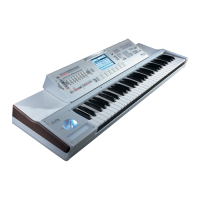
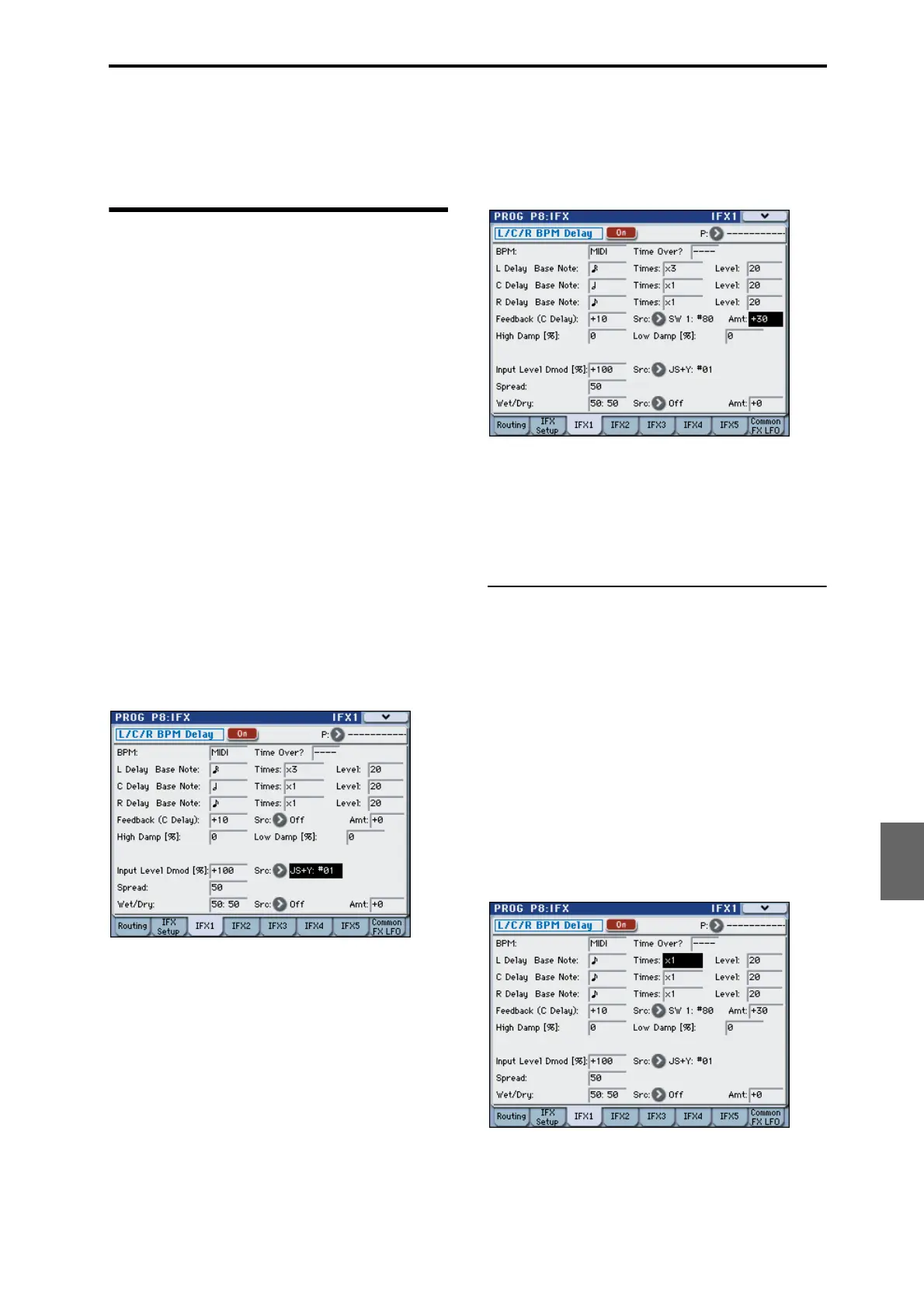